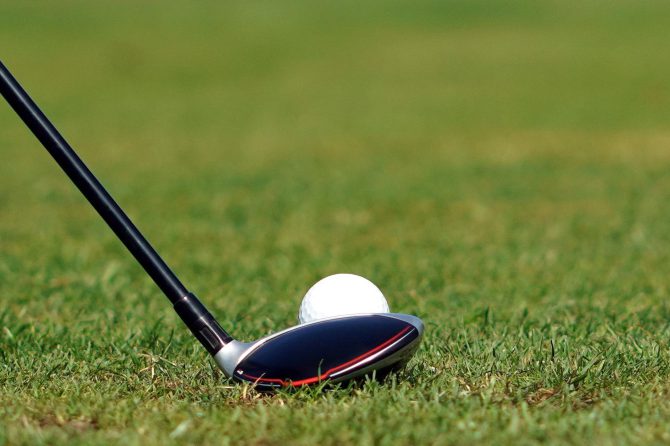Biomechanical Insights into Dustin Johnson’s Golf Technique
Achieving excellence in golf demands not only exceptional skill but also a profound grasp of the biomechanical principles that govern effective swing mechanics. Among today’s elite golfers, Dustin Johnson is a prime example of power and precision, demonstrating a technique that seamlessly integrates physical capability with biomechanical efficiency. This article delves into the complex biomechanical elements that contribute to Johnson’s remarkable golfing abilities. By analyzing his grip, stance, and swing dynamics, we will highlight the physical traits—such as flexibility, strength, and coordination—that support his performance. Additionally, we will explore the cognitive dimensions of Johnson’s game strategy, including his distinctive teaching methods that encourage adaptability and personalization in technique. Through this analytical perspective, we aim to provide an in-depth understanding of how Johnson’s approach exemplifies the application of biomechanical principles in competitive golf—serving as a model for aspiring golfers looking to improve their performance on the course.
Understanding Biomechanics in Dustin Johnson’s Golf Swing
Dustin Johnson’s golf swing serves as an exemplary case study for applying biomechanical principles aimed at enhancing athletic performance. A fundamental aspect of his technique is kinematic sequencing, which involves the precise coordination of body segments throughout the swing motion. His impressive lead arm movement initiates this sequence effectively, optimizing energy transfer from his lower body to the clubhead. This efficient motion allows him to achieve maximum clubhead speed at impact—a crucial factor contributing to his driving distance.
A significant element influencing Johnson’s swing is the management of joint angles. His hip and shoulder rotations work synergistically to generate torque and stability during both backswing and downswing phases. The use of an open stance enables deeper rotation while maintaining alignment and balance—key components for generating substantial angular momentum. This dynamic interaction among various joints not only amplifies power but also enhances accuracy by ensuring proper clubface orientation at impact.
The patterns of muscle activation are vital for sustaining efficiency throughout Johnson’s swing cycle. He employs a combination of concentric and eccentric muscle actions, particularly engaging core muscles during transitions between swings—providing stability while promoting optimal force production. Understanding these biomechanics can greatly benefit coaches and players alike by facilitating customized training programs tailored to individual strengths.
Kinematic Examination: The Impact on Performance in Dustin Johnson’s Swing Path
Dustin Johnson’s swinging path can be described as a series of meticulously coordinated movements designed to optimize both distance and accuracy on every shot he takes. His strong shoulder turn initiates this effective kinematic sequence by generating torque within his lower body—a smooth transition leading into an impactful downswing phase is critical here. By adhering closely to a consistent swinging plane, he minimizes lateral movements that could introduce inconsistency into his game play style.
The interplay between various joint angles throughout each phase significantly influences overall performance outcomes for him as well—the range exhibited across key joints such as hips, shoulders, and wrists plays an essential role here too! For instance: during loading phases where potential energy accumulates via hip angle adjustments before transitioning smoothly downwards towards impact moments when wrist hinges create acute angles allowing full release through contact points—all these factors contribute directly towards achieving powerful strikes while retaining control over finesse aspects!
A closer look at data regarding key metrics related specifically toward measuring effectiveness reveals valuable insights about how efficiently he executes swings:
| Kinematic Metric | Description / Measurement Value |
|---|---|
| Peak Clubhead Speed: | (120 mph) |
| Swing Plane Angle: | (45°) |
| Average Hip Turn (Degrees): | < td >(45°) < tr >< td >< b >Wrist Angle At Top :< td >(90°)
Biomechanical Insights into Dustin Johnson’s Golf Swing: Techniques and Strategies
Dustin Johnson’s golf swing is a remarkable blend of biomechanics that has garnered significant attention. This analysis delves into the kinematic and kinetic elements of his swing, revealing the intricate relationships between body segments, joint angles, and muscle activations. By identifying these key biomechanical factors, we can better understand how he achieves exceptional power, accuracy, and consistency on the course.
The Importance of Joint Angles in Enhancing Power and Precision
The optimization of joint angles is crucial for Dustin Johnson’s ability to generate impressive power while maintaining precision. At the beginning of his backswing, shoulder and hip angles are pivotal. As he rotates his shoulders, his hips follow suit in a manner that creates substantial torque along the spine. This angular separation facilitates a loading effect essential for explosive energy transfer during the downswing. Maintaining optimal angles throughout this phase is vital for balancing power generation with control—leading to superior ball striking.
As Johnson transitions from the peak of his swing to impact, proper alignment of his elbow and wrist joints becomes critical. The flexion in his lead arm combined with precise clubface positioning involves finely tuned coordination among joint angles that enhances striking accuracy. Research indicates that effective wrist positioning at impact can significantly reduce spin while maximizing distance. By keeping his wrists neutral, Johnson aligns the clubface accurately with the target line—improving shot consistency.
Key Joint Angles During Critical Phases
The following table outlines essential joint angles at various stages of Johnson’s swing:
| Phase of Swing | Joint Angle | Significance |
|———————-|———————|————————————————|
| Top of Backswing | Shoulder Turn: 90° | Maximizes torque for enhanced power generation |
| Transition | Hip Rotation: 45° | Maintains balance while initiating downswing |
| Impact | Wrist Angle: Neutral| Improves accuracy and minimizes spin |
Muscle Activation Patterns in Dustin Johnson’s Swing: A Comparative Analysis
Examining muscle activation patterns during Dustin Johnson’s golf swing reveals distinct strategies contributing to his athletic prowess. In the backswing, key muscle groups—including pectorals, latissimus dorsi, and rotator cuff muscles—are engaged to facilitate smooth motion. This engagement allows significant torque generation around both hips and shoulders—a solid foundation for an effective downswing.
During the downswing phase, timing becomes crucial as he activates muscles such as glutes, quadriceps, and hamstrings explosively transferring energy from lower body movements to upper body dynamics including clubhead speed enhancement through specific patterns involving both eccentric and concentric contractions which minimize injury risk while maximizing performance efficiency.
Comparative Muscle Activation Patterns
A comparative study contrasting Johnson’s swing with amateur golfers highlights notable differences in muscle recruitment:
| Phase of Swing | Dustin Johnson | Amateur Golfer Aim |
|———————-|—————————————–|—————————————–|
| Backswing | High activation in pectorals & lats | Low activation; reliance on arm lift |
| Downswing | Coordinated glute & quad engagement | Delayed activation; upper body reliance |
| Follow-through | Controlled release | Inconsistent follow-through; excess tension|
Understanding these muscle activation patterns is essential not only for instruction but also for self-analysis among golfers aiming to enhance their performance through tailored training programs focused on individual biomechanics.
Enhancing Golf Instruction Through Biomechanical Understanding
Insights gained from analyzing Dustin Johnson’s biomechanics offer valuable lessons applicable across all levels of golfing proficiency. Recognizing how specific techniques align with physical capabilities allows instructors to customize training regimens effectively—ensuring each golfer maximizes their potential based on unique biomechanical profiles.
By focusing on developing appropriate muscle groups throughout each phase of their swings—and understanding how joint angles influence overall performance—golfers can significantly elevate their game efficiency while reducing injury risks associated with improper mechanics or overexertion.
Analyzing the Technique of Dustin Johnson: A Comprehensive Study
Dustin Johnson, a prominent figure in professional golf, has garnered attention for his impressive swing characterized by both power and precision. This article delves into the intricacies of Johnson’s technique, focusing on the biomechanical and cognitive elements that contribute to his success on the golf course.
Key Components of Johnson’s Swing
Johnson’s unique grip, stance, and swing mechanics are essential aspects that enhance his performance. These elements can be tailored to fit individual golfers’ needs. By understanding how these factors interact, coaches can create personalized training programs that optimize each golfer’s swing based on their specific physical characteristics.
Power Generation and Kinematic Sequencing
A critical aspect of Johnson’s technique is his ability to generate power through effective kinematic sequencing. His swing can be broken down into distinct phases:
| Phase | Description |
|—————-|—————————————————|
| Setup | Establishing a proper grip, posture, and alignment. |
| Backswing | Rotating the hips while maintaining balance. |
| Downswing | Coordinated movement of hips followed by shoulders. |
| Impact | Achieving an optimal body position for energy transfer. |
| Follow-through | Completing the motion while sustaining balance. |
This structured approach highlights how energy flows from the lower body to the upper body during a swing.
Cognitive Strategies in Golf Training
In addition to physical techniques, cognitive strategies such as visualization and focus enhancement play a vital role in improving performance. Encouraging athletes to visualize successful swings helps build mental resilience and enhances overall execution on the course.
The integration of biomechanics with cognitive strategies not only improves physical performance but also sharpens mental acuity—essential for consistent success in golf instruction tailored to individual needs.
Insights and Conclusions
The analysis of Dustin Johnson’s golfing technique reveals a complex relationship between physical dynamics, mental strategies, and customized instructional methods that contribute significantly to his achievements at high levels of competition. By examining key aspects like grip style, posture adjustments, and swinging mechanics more closely, we gain valuable insights into what drives his exceptional power and accuracy.
Moreover, Johnson’s innovative teaching philosophy underscores fundamental principles while allowing room for personal adaptation—empowering aspiring golfers to elevate their game effectively. As we continue exploring biomechanical factors within golf training methodologies inspired by figures like Johnson, it becomes clear that both physical skill sets alongside mental fortitude are crucial for excelling in this challenging sport.
Future studies may further clarify these mechanisms at work within golfing techniques—providing invaluable knowledge for players seeking peak performance as well as instructors aiming to refine their coaching practices.

Unlocking the Secrets of Dustin Johnson’s Golf Swing: A Biomechanical Perspective
Meta Title: Unlocking the Secrets of Dustin Johnson’s Golf Swing
Meta Description: Discover the biomechanical techniques behind Dustin Johnson’s powerful golf swing. Learn about kinematics, kinetics, and practical tips for improving your own game.
Understanding Biomechanics in Golf
Biomechanics plays a critical role in optimizing golf performance. By studying the movement patterns and forces exerted during a golf swing, players can refine their techniques for greater efficiency and power. This analysis focuses on the extraordinary swing of professional golfer Dustin Johnson, revealing insights that can benefit golfers at all levels.
Key Biomechanical Concepts
- Kinematics: This refers to the motion of golf swing components without considering the forces involved. Important aspects include joint angles, segment velocities, and the overall trajectory of the swing.
- Kinetics: Involves the forces that cause motion. Understanding how ground reaction forces and body weight distribution impact a swing can enhance performance.
The Mechanics of Dustin Johnson’s Swing
Dustin Johnson is renowned for his powerful and consistent swing, which can be attributed to several biomechanical factors.
1. Optimal Body Positioning
Johnson uses an athletic stance that allows for maximum mobility and balance. Key features include:
- Knee Flexion: A slight bend in the knees helps maintain balance and prepares the body for the rotational forces of the swing.
- Hip Rotation: Effective hip movement enhances power generation, contributing to increased clubhead speed.
2. Upper Body Dynamics
The upper body plays a significant role in the swing, particularly in generating power and accuracy.
- Shoulder Turn: A full shoulder rotation is critical for creating torque. Johnson’s ability to achieve a complete shoulder turn sets him up for a powerful downswing.
- Arm Structure: Maintaining a relaxed grip and appropriate width in the backswing allows for better control and extension.
Analyzing Swing Phases
Dustin Johnson’s swing can be divided into several distinct phases, each with its own biomechanical challenges and strategies:
1. Takeaway
The initial movement of the club. Key points include:
- Smooth Transition: A gradual takeaway helps prevent over-rotation.
- Clubface Angle: Keeping the clubface square enhances consistency from the start.
2. Backswing
A crucial phase where power is generated.
- Shoulders and Hips Rotation: Engaging both upper and lower body to rotate maximally without losing balance.
- Angle of Attack: Maintaining a proper spine angle ensures a consistent swing path.
3. Transition
The moment from backswing to downswing.
- Timing: Efficiently transitioning from loading to unloading can maximize speed and force.
4. Downswing
The most dynamic phase where power is unleashed.
- Hip Initiation: Initiating the downswing with the hips creates a chain reaction of movement that accelerates the clubhead.
- Follow-Through: A balanced follow-through indicates a well-executed swing.
Biomechanical Factors Contributing to Power
Several biomechanical factors combine to enhance Johnson’s swinging power:
- Ground Reaction Forces: Utilizing the ground for leverage translates to greater clubhead speed.
- Muscle Activation Patterns: Specific muscle groups must be activated in sequence to maximize energy transfer.
Practical Tips to Enhance Your Swing Using Biomechanics
Here are some actionable strategies golfers can implement based on biomechanical principles observed in Johnson’s swing:
- Focus on Body Rotation: Practice drills that emphasize hip and shoulder rotation to build a more powerful swing.
- Maintain Balance: Prioritize a balanced stance throughout your swing to prevent unnecessary movements that can lead to inconsistencies.
- Strength and Conditioning: Improve strength in the core and legs, which are crucial for maintaining stability and generating power.
- Video Analysis: Utilize video technology to analyze your swing mechanics and make adjustments based on biomechanical principles.
Case Studies: Swing Analysis of Professional Golfers
Table: Comparative Analysis of Golf Swing Mechanics
| Golfer | Key Features | Power Generation | Accuracy Level |
|———————|——————————–|———————–|————————|
| Dustin Johnson | High hip turn, strong follow-through | Excellent due to drive | Outstanding |
| Rory McIlroy | Compact swing, quick release | High due to timing | Very high |
| Tiger Woods | Powerful lower body use | Exceptional | Consistent |
Benefits of Understanding Biomechanics in Golf
- Enhanced Performance: Improved swing mechanics lead to better results on the course.
- Injury Prevention: By understanding proper biomechanics, golfers can reduce the risk of common injuries.
- Personalized Instruction: Coaches can tailor techniques based on an individual’s biomechanics, leading to more effective training.
Conclusion
A deep understanding of the biomechanics behind Dustin Johnson’s golf swing reveals essential techniques and strategies that can be integrated into any golfer’s practice routine. By focusing on kinematics and kinetics, players can unlock greater potential on the course, enhancing their game and enjoyment of this timeless sport.
—
Ensure to integrate these principles and insights into your practice regimen to replicate a level of success akin to that achieved by Dustin Johnson.
You might be interested in …

Suni Lee’s Recovery & Comeback After Sustaining Injury | Golden: The Journey of USA’s Elite Gymnasts
Suni Lee’s remarkable recovery and triumphant comeback after sustaining an injury showcase her unwavering resilience and determination. Witness the golden journey of USA’s elite gymnasts as they defy all odds. #SuniLee #Gymnastics #GoldenJourney 🥇
Exploring Lloyd Mangrum’s Innovative Golf Instruction Methods
Lloyd Mangrum’s golf instructional methods revolutionized teaching by emphasizing personalized strategies and core fundamentals. His structured approach, focusing on swing mechanics, grip, and posture, empowers golfers to enhance their performance effectively.

The Legacy of Bobby Locke: A Comprehensive Approach to Modern Golf Instruction
Bobby Locke’s legacy as an influential instructor in modern golf instruction is profound. His emphasis on biomechanics, precision, and relentless pursuit of perfection laid the foundation for modern golf instruction. Locke’s meticulous attention to grip, stance, and ball striking, coupled with his groundbreaking analysis of the golf swing, set the stage for the way golf is taught and played today. His unwavering belief in the importance of precise practice and mental toughness left an indelible mark on the game, solidifying his status as one of the most influential instructors in the history of golf.


